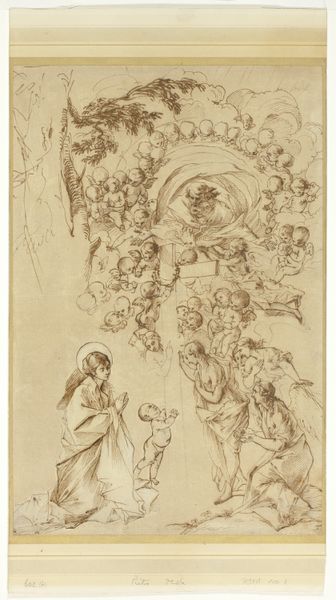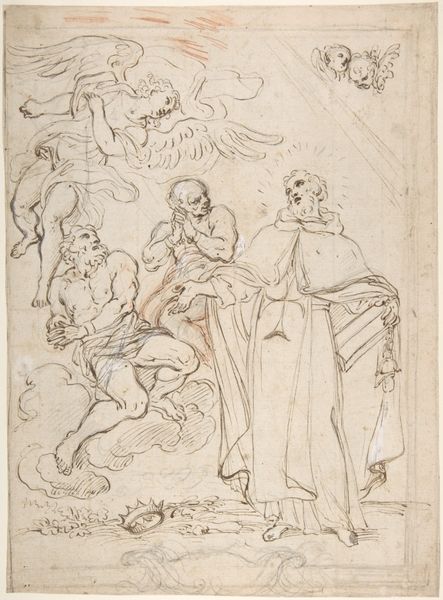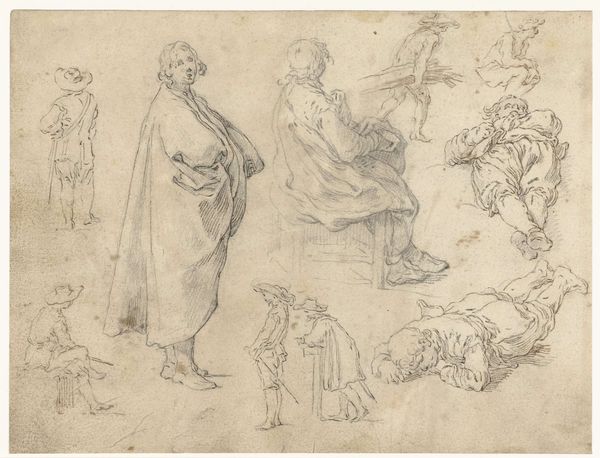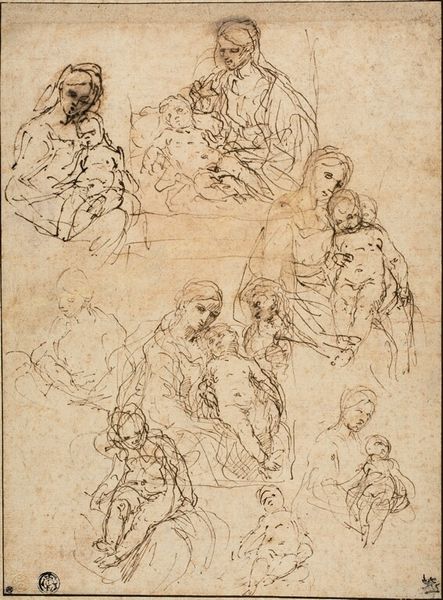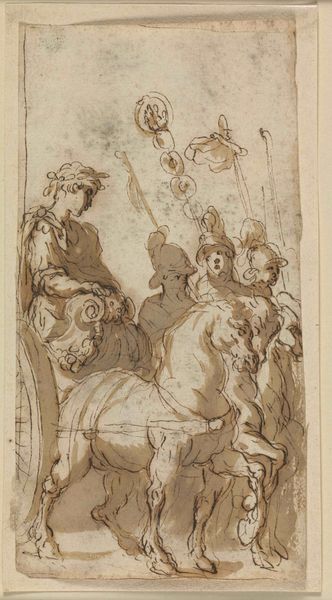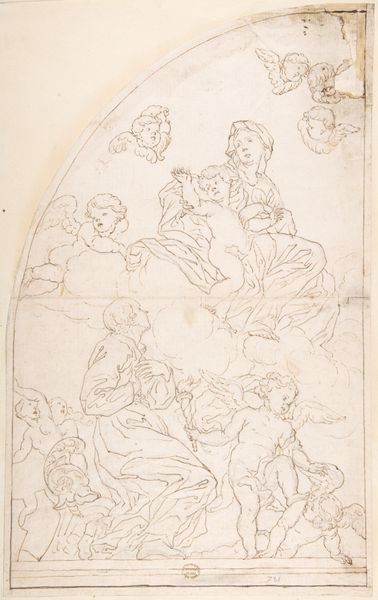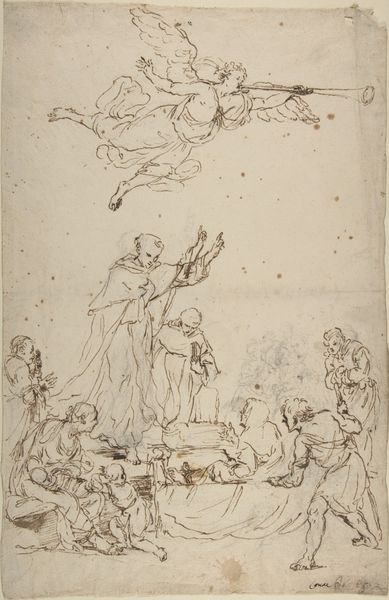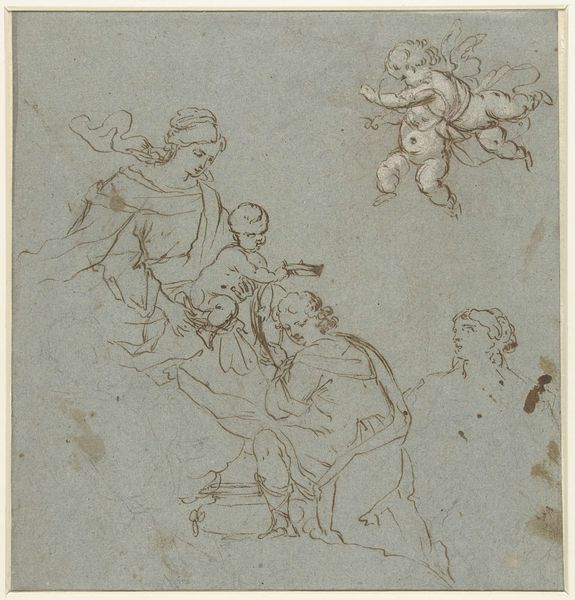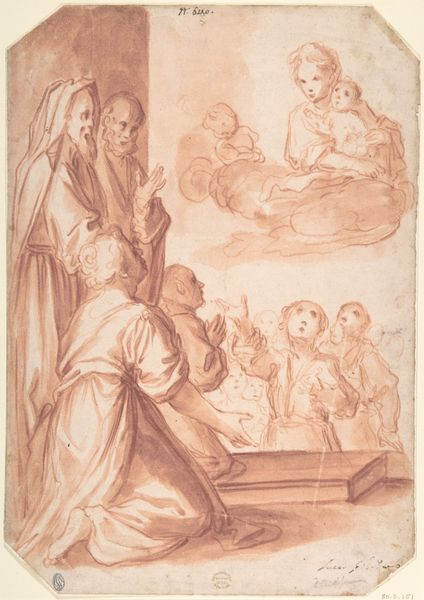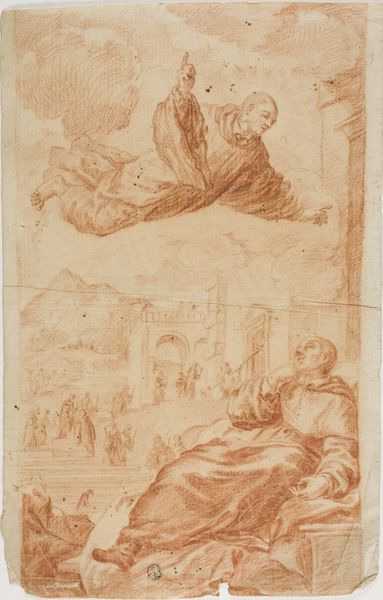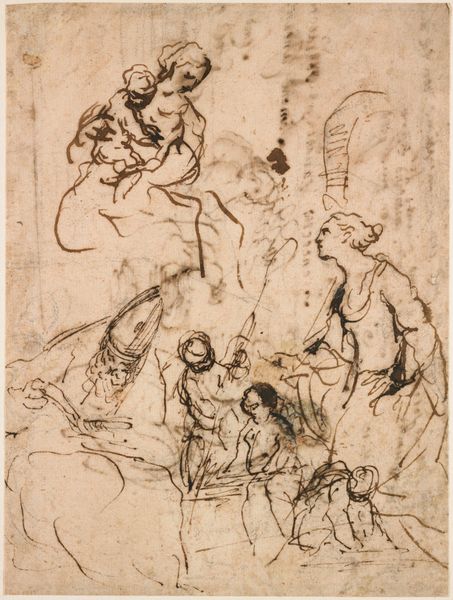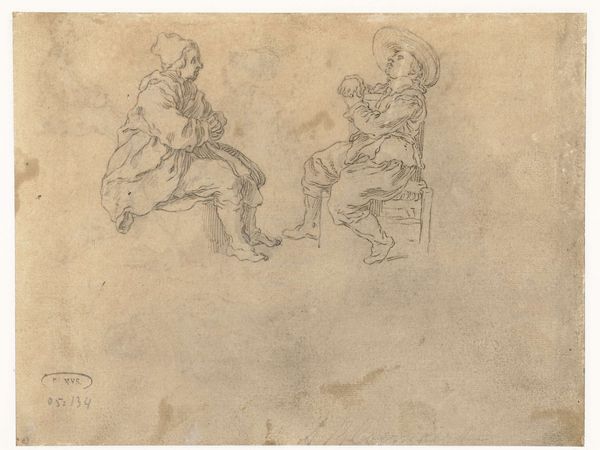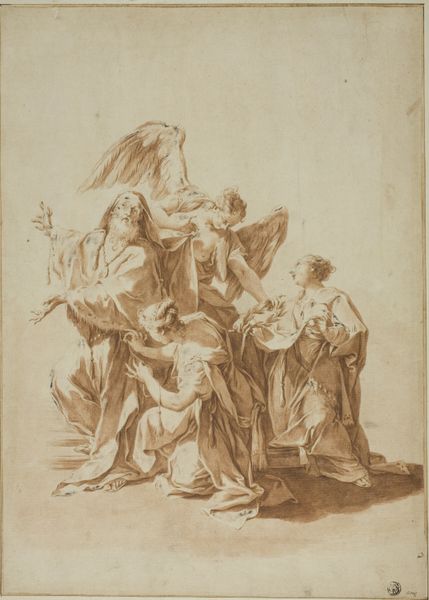
Studienblatt_ Apostel, Geburt und Anbetung Christi, Fuß eines Knienden
0:00
0:00
drawing, paper, ink
#
drawing
#
figuration
#
paper
#
11_renaissance
#
ink
#
13_16th-century
#
academic-art
#
italian-renaissance
Copyright: Public Domain
Curator: What we have before us is a page teeming with life – a study sheet by Francesco Vanni. Aptly named “Studienblatt: Apostel, Geburt und Anbetung Christi, Fuß eines Knienden,” it is a medley of figures rendered in ink on paper, part of the Städel Museum's collection and reflective of the Italian Renaissance's fascination with capturing the human form. Editor: You know, looking at this page, the first thing that jumps out at me is the sheer energy. It feels like peering into the artist's sketchbook – a raw, unfiltered burst of creative exploration. Almost as if a flurry of thoughts have been rapidly given form by the hand of Vanni himself. Curator: Absolutely, and that speaks to the tradition of preparatory drawings. Beyond the aesthetic, Vanni captures both secular and spiritual with the symbols that are deeply embedded into the very subject that he chooses. The adoring poses evoke tenderness but they're counterweighted by that apostle on the upper-left, sat alone with his own considerations. The work becomes an act of remembering itself, for an age which was in constant interaction between humanity and divinity. Editor: I hadn't thought of the drawing sheet that way, as something weighted. To me, it seemed quite light, like Vanni's impressions as an artist. Maybe because of the monochrome palette, I find there is a humble charm that resonates from it that reminds me that making artwork requires as much labour as inspiration. Curator: Exactly! Each individual study is a symbol not only of its religious connotations but also of a whole history of techniques; the hatching, cross-hatching, line work that bring form from nothing. This image encapsulates the academic art training from the Renaissance. You get the sense Vanni deeply studied his figures, knowing full-well how bodies bear social meaning too. Editor: I suppose. And the composition— or lack of it —becomes something of an invitation, don’t you think? As we shift our eyes through these seemingly unrelated elements it’s as if the piece invites us into an intimate encounter with art production and, in return, become present to a deeply meditative theme. Curator: A fruitful dialogue. It is often said drawings offer a glimpse into the artist's mind, yet pieces like these simultaneously throw open a whole historical period as well. Editor: Well put. Here’s to appreciating these fragments and what they continue to inspire.
Comments
No comments
Be the first to comment and join the conversation on the ultimate creative platform.
